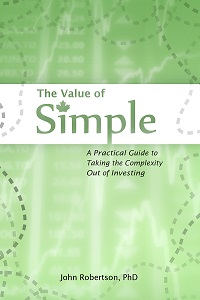My recent bought of TV watching brought to my attention the new MedsCheck program from the Ontario government. The program allows anyone on more than 3 medications for chronic conditions to set up an appointment with their pharmacist to go over their prescriptions to make sure that there aren’t any potential bad interactions or confusion in the instructions, or any other ways that patient care could be improved. The visit is free (as free as any of our health care is — paid for by OHIP), and is paid out on a flat rate of 30 minutes (that is, the pharmacist gets $50 from OHIP per MedsCheck appointment, regardless of how long it actually takes). It sounds like a decent program that might help catch a few people who are on the road to “have a bad time”.
But then I remembered that I’m off to the eye doctor in a few weeks to have my biennial* eye exam, for which I will have to pay out of pocket (technically, my supplementary graduate student health insurance will pay for it, but then that means that I’ll have to pay more out of pocket for my lenses, since there’s a pretty small limit on the eye benefit). For a government that’s facing an election soon, that had to somewhat drastically cut back on OHIP benefits and introduce a health tax some years ago, I don’t really see this program as being a high priority. $50 million (note that I don’t know what time period the $50 million funding is for: per year, per 4-year budget cycle…) buys a lot of eye exams. As someone who’s had glasses since kindergarten and worries about what I would do with myself if I ever lost my vision (and I’ve had a number of close calls), I put much more importance on OHIP funding vision check-ups (even if they were only every five years) than on checking for drug interactions.
It might also be a waste, a duplication of resources. After all, many (all?) pharmacists already check your prescription record when you get a new prescription to make sure that there won’t be any complications, paid for as part of the dispensing fee. Of course, those checks may not reveal non-prescription drug/natural health product interactions, which may not appear on a list of prescriptions, but which may be revealed in an interview.
Being a pharmacist is a pretty thankless job: all the hassles of retail sales dealing face-to-face with customers, along with having to interpret the arcane scrawl of physicians (and their often incredible ability to make factor of 10 errors in dosing), being the last guardian of a wall full of narcotics in a world that is apparently full of druggies, all while having to take disgusting amounts of chemistry in university. Lately though, I don’t have much love of pharmacists. To the world on the other side of the counter, a big part of the job appears to be taking a piece of paper, turning around, grabbing a pre-packaged box of pills off the shelf, turning back around, putting it in a basket, and charging $14 for the service. That bitterness comes because of some of the arcane charges racked up: Wayfare, for instance, had a prescription for 4 months worth of a drug filled at Shoppers Drug Mart not too long ago, and was charged two dispensing fees: one for the first three-month bundle, and one for a 1-month bundle. Plus another two dispensing fees for the other two medications on the same scrip. That was, incidentally, the last time we went to Shoppers to get a prescription filled (though we still go there, since they’re a first-rate convenience store). I can’t remember the details exactly from when I had my kidney stone (partly because it was once again Wayfare dealing with the pharmacist, and partly because I was in the depths of a near-comatose state when she told me the story), but because of a miscalculation in the dosage from the resident at the hospital, the pharmacy wouldn’t fill my codeine prescription. Not even a single dose to get me through the night. There was some sort of desperate phone call made to the attending at UH to sort the whole matter out, made very reluctantly, if I remember the story right.
There are some good ones out there for sure, particularly the ones who helped my dad out a few years ago when his doctors were crazy and he needed new drugs every few weeks (it also helped that my mom was a nurse and was able to figure out the discrepancies between what the doctor said he was prescribing and what actually appeared on the pad after the pen flew over it). Hoping that they turned into one of the good ones, I asked an old friend what they thought about the MedsCheck program:
You need to look at the entire background before coming up to a decisive position.
The gov decided to cap the amount of money generic companies could charge for their products. They also eliminated the direct rebates that these companies used to pay pharmacies for using their products. All of a sudden pharmacies found themselves with a direct cut in income. This put more emphasis on increasing the number of prescriptions being dispensed without adjusting resources. This in turn reduced the amount of time spent per prescription.
The gov had to somehow offset this trend and thus, brought in the MedsCheck program. This program reimburses pharmacists for spending a set amount of focused time with each eligible patient.
This is actually mentioned in the CTV version of the report, but I didn’t really focus on it:
“But the new law also puts a squeeze on pharmacists because it reduces the amount of cash they can get from dispensing generic drugs…”
“While the government has taken out $277 million, this program only puts $50 million back in, he added.
The Transparent Drug System for Patients Act, passed last June, limited the promotional allowances pharmacists can collect from generic drug companies to 20 per cent of their cost, prompting some to warn dispensing fees would have to go up to keep pharmacies open.”
To introduce a new OHIP plan to try to offset the loss of revenue from another law is pretty messed up, and IMHO, not good health care policy. Of course, that’s the way politics works sometimes, but it does kind of stink. Especially since it doesn’t actually do that job very well ($50 million is a lot less than the $277 million quoted). I have to wonder though, if the pharmacies are losing money because the government eliminated the rebates from the drug companies, wouldn’t the lack of rebate lower the drug companies’ costs? Couldn’t they just lower the upfront price to the pharmacy instead of this rebate business? Looking briefly at the Transparent Drug System for Patients Act page from the government, it looks like the cap on generic payouts only affects patients in the Ontario Drug Benefit program (though limiting generics to 50% of the price of name brand drugs sounds fairly severe), and not mentioned is that the government is “Enforcing drug pricing compliance from manufacturers which will protect pharmacists from unauthorized price increases.” So while the government plans to save $277 million with the reforms, it doesn’t appear as though that’s all on the backs of the pharmacists (though cleaning up the rules on rebates may hurt the pharmacies’ bottom lines without being reflected as a savings for the government). I’m left wondering if the biggest negative impact was simply due to the suddenness of the change.
Now, if it weren’t for the optics of health care funding lacking in other areas (and the still-stinging health care tax), I think this would be a great program. Heck, the government could even pick up the full cost of drugs and dispensing fees for Ontarians, and dental coverage while they’re at it, and take away the need for supplementary health insurance (the prevalence of which is kind of twisted in a country with universal health care), and I’d vote for it. But as it is, I don’t know what to make of this MedsCheck program.
Aside: I was going to use “biannual” but thought that might possibly mean twice a year, rather than once every two years. The dictionary indicated that was the case. So then I looked up “semiannual”… and found that it also meant twice a year… those can be some deceptive terms. Bimonthly apparently means both.
PS: If you want to leave a comment on this post, please be aware that nearly any word having to do with a pharmacy will land a comment in the spam filter, so it may take a while for me to clear the legit ones.


 Questrade: use QPass 356624159378948
Questrade: use QPass 356624159378948 Passiv is a tool that can connect to your Questrade account and make it easier to track and rebalance your portfolio, including the ability to make one-click trades.
Passiv is a tool that can connect to your Questrade account and make it easier to track and rebalance your portfolio, including the ability to make one-click trades.